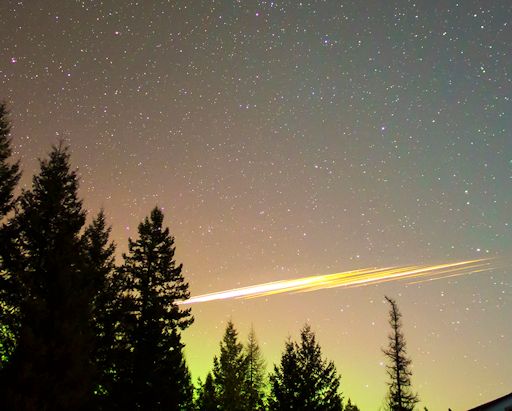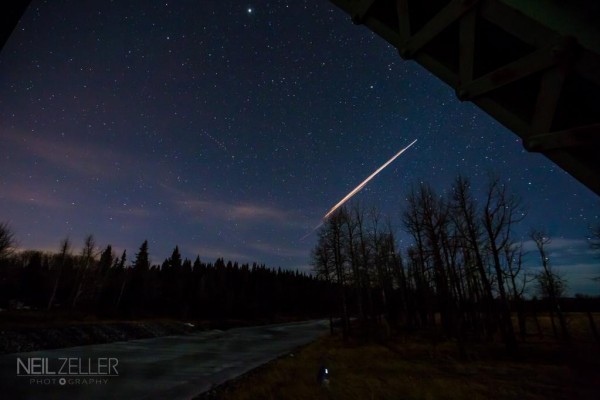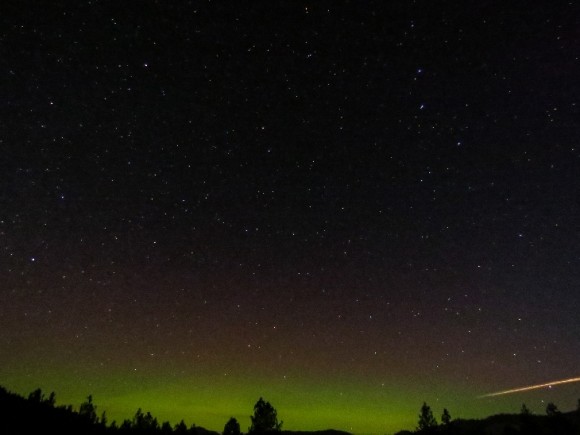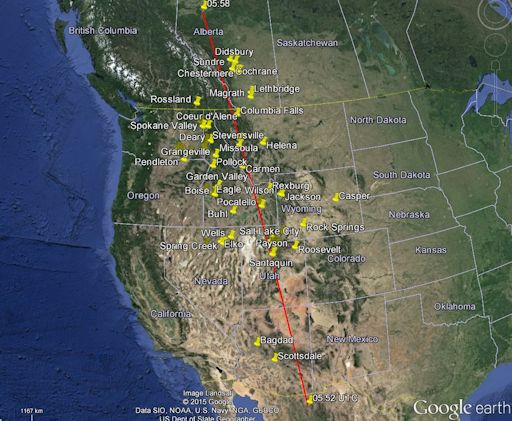
Monday night (February 23-24, 2015), observers across the western half of North America witnessed a cluster of bright lights slowly moving south to north across the dark night sky. Some mistook it for a meteor, but it was the re-entry and disintegration of a Chinese rocket body, specifically stage 3 of the CZ-4B rocket that launched the Yaogan Weixing 26 satellite in December, 2014. Coincidentally, a geomagnetic storm was in progress at the time, and lucky photographers caught the rocket’s debris cutting across curtains of northern lights.



The American Meteor Society reported:
… over 145 reports from western states last night (February, 23th 2015) about a slow moving grouping of fireballs traveling from the south east to the north west. Witness reports indicate, the object travelled over a 1,000 mile distance and was seen from as far south as Arizona and as far north as Alberta CA. The phenomenon was seen from Arizona, Idaho, Utah, Montana, Nevada, California, Washington, Oregon, Wyoming, Alberta and British Columbia on Tuesday, February 24, 2015 around 11:00 p.m. Mountain Time.
Citizen satellite-tracking expert Ted Molczan told spaceweather.com:
The most southerly observation I have noted so far was from Scottsdale, Arizona; the most northerly from Didsbury, Alberta. That spans nearly 3,000 km of the descent.
Enjoying EarthSky? Sign up for our free daily newsletter today!
Now check out the videos below. The greatest thing about them may be the comments people are making while watching this amazing sight in the night sky.

Bottom line: On the night of February 23-24, 2015, lucky observers across the western half of North America saw a cluster of bright lights slowly moving south to north across the night sky. It was the re-entry and disintegration of a Chinese rocket body, specifically stage 3 of the CZ-4B rocket that launched the Yaogan Weixing 26 satellite in December, 2014.











